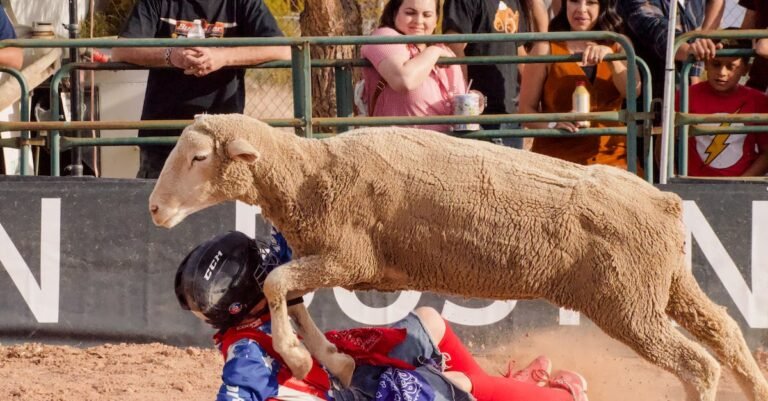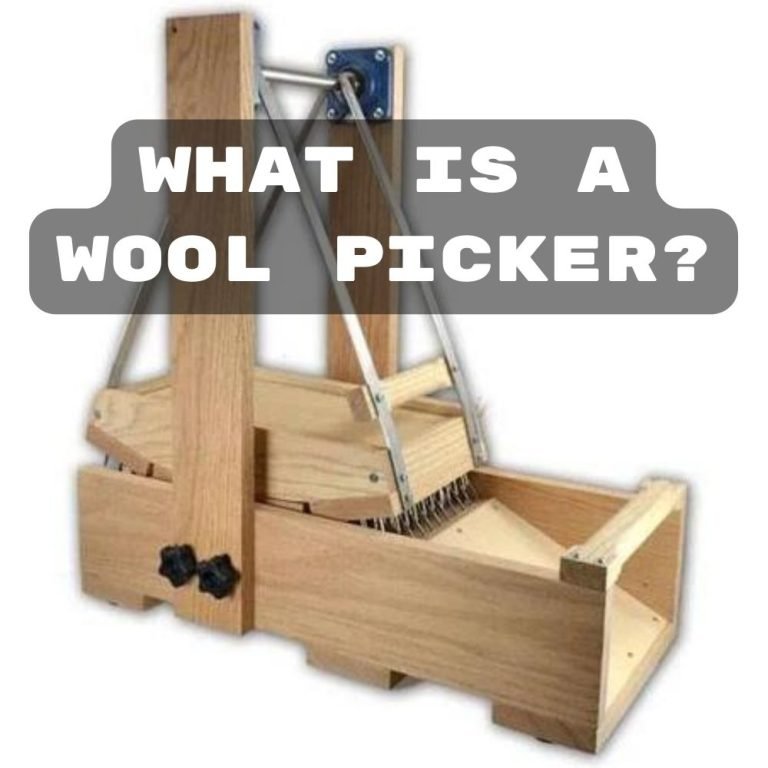Understanding Triplet Births in Sheep: Frequency, Challenges, and Management Strategies
Ever wondered about the birthing habits of sheep? I sure have. Specifically, I’ve been intrigued by how often sheep have triplets. It’s a fascinating topic that’s not as straightforward as you might think.
If you’re a sheep farmer or just someone with an interest in these woolly creatures, you’ll know that understanding their reproduction patterns can be quite useful. Let’s dive into this topic and shed some light on the frequency of triplet births in sheep.
It’s a common misconception that sheep always give birth to a single lamb. In reality, the number of lambs born can vary significantly. It’s time to debunk some myths and get to the truth about sheep and their triplet birthing frequency.
Key Takeaways
- The number of lambs a sheep can birth varies significantly and is influenced by several factors, including breed, age, health, and diet.
- Genetics play a crucial role in the number of lambs born to a sheep. Some breeds, like the Finnish breed Finnsheep, are known for often giving birth to multiple lambs, whereas others, like the Merino breed, typically produce only one.
- Age and health also significantly impact a ewe’s lambing rate. Older, healthier ewes are more likely to have multiple lambs.
- Implementing specific management practices, such as timed breeding and hormonal treatments, can increase the odds of multiple births.
- Raising the frequency of triplet births comes with several challenges, such as increased lamb mortality rate, greater nutritional demands on the ewe, more intensive labor requirements, and the risk of Selective Twin Reduction (STR).
- To overcome these challenges, farmers need to optimize their management practices and provide adequate care to triplet-bearing ewes.
Common Misconceptions about Sheep Birthing Habits
Many people believe sheep only give birth to one lamb at a time. A single lamb clinging to its mother’s side is indeed a common sight. However, it’s a misconception to think that single births are the norm in every sheep breeding cycle.
One factor that heavily influences the number of lambs a sheep brings into the world is genetics. Some breeds are renowned for frequently having twins or even triplets. However, it isn’t a hard and fast rule, and many variables can affect the outcome.
Lambing rates, defined as the number of lambs born per ewe per year, can vary significantly. Variables like age, breed, health and even diet can sway lambing rates one way or another.
Here’s an illustration with a few popular sheep breeds and their average lambing rates:
| Breed | Average Lambing Rate |
|---|---|
| Merino | 1 |
| Texel | 1.5 |
| Finnsheep | 3 |
As you can see, the Finnish breed, Finnsheep, has an astounding average lambing rate of three. On the flip-side, the Merino breed generally sticks to one lamb per birth. The Texel lies in between the two extremes.
It’s also worth mentioning that, while triplets and more may be exciting on the surface, they can often present challenges for both the sheep and the shepherd. More lambs mean more resources are required from the ewe and that’s not always a good thing. It can lead to instances of one or more lambs not surviving, thereby bringing down the overall numbers.
So, just as we’re debunking one common misconception, here’s another: having more lambs at every birth isn’t necessarily the best thing for the sheep or its brood.
Overall, it’s clear that when it comes to sheep and their lambing habits, the reality is far more complex than what’s often portrayed or understood. And as always, the truth lies somewhere in between. Every breeder and every breed has its unique nuances and characteristics that shape these birthing traditions.
Factors Affecting the Frequency of Triplet Births
As we delve deeper into sheep birthing odds, it’s key to understand the many variables at play. In fact, there are numerous factors that can influence whether a ewe will give birth to a single lamb, twins, or even triplets.
Breed plays a significant role in sheep lambing rates. For instance, the Finnish breed Finnsheep is known for frequently delivering triplets, even quadruplets. On the other extreme, the Merino breed tends to have single births. A survey of various sheep breeds and their typical lambing rates would reveal a wide range of possibilities based on genetics alone.
Age can also affect a ewe’s lambing rate. While younger ewes tend to have single births or twins, seasoned mothers are known to have higher incidences of triplets.
Health and Diet impact not just the frequency of such births, but also the survival chances of the lambs. Undernourished or ill ewes tend to have fewer lambs and lower survival rates. Conversely, well-nourished and healthy mothers are more likely to have multiple robust lambs.
So does that mean a healthy, mature Finnsheep ewe should always expect triplets? Not necessarily. Even within the same breed and similar conditions, individual variations exist. There’s no surefire formula for predicting how many lambs a ewe will have.
With that being said, I’d like to address management practices, another significant factor. These can greatly affect the lambing rate. For example, shepherds can influence the odds of multiple births by choosing when to breed their ewes, among other things. Controlled breeding during the ewe’s most fertile period can boost the chances of multiple births.
Let’s have a side-by-side comparison of the sheep breeds and their average lambing rates:
| Breed | Average Lambing Rate |
|---|---|
| Finnsheep | 3 |
| Merino | 1 |
Remember, these averages are not absolute and can change depending on the individual sheep and other influencing factors that we’ve discussed.
Now that we’ve shed some light on the factors influencing the frequency of triplet births in sheep, we can explore further the management practices that shepherd can employ to increase those odds or handle the challenges when they occur.
Natural and Artificial Methods to Increase Triplet Births
Increasing the rate of triplet births in sheep is a fascinating subject. Both nature and technology have stepped in to offer assistance. The process often requires a marriage of the two, leveraging a ewe’s inherent capacities and enhancing them with artificial methods.
On the natural side, it’s worth noting that selection and genetics play essential roles. Certain breeds, such as the Finnsheep, have a DNA-deep propensity for multiple births. Therefore, crossbreeding these high-lambing breeds with other sheep can result in a higher likelihood of triplets.
Additionally, age and diet also heavily impact the chances. Experience shows that older ewes tend to have more triplets, as their reproductive systems have become more efficient over the years. Providing a nutrient-rich diet, especially during gestation, is another natural way to improve triplet arrivel. It supplies the ewes with the energy and nutrients needed to support multiple pregnancies successfully.
Moving to artificial methods, the development of controlled breeding techniques has proven particularly effective. This involves timing the mating to coincide with the ewe’s most fertile period, increasing the chances of multiple ovulation. An ovulation rate of more than two often leads to a higher incidence of triplets.
Another artificial method is the use of hormonal treatments. Administering hormones like PMSG (Pregnant Mare’s Serum Gonadotropin) stimulates the ovaries, resulting in multiple ovulations.
Investment in these techniques often yields profitable results for farmers. In the next section, we’ll delve deeply into the economic impacts of these strategies and why it’s worth considering them.
Challenges and Considerations with Triplet Births
Let’s now delve into the challenges and considerations associated with triplet births in sheep. Farmers who pursue the path of increasing triplet births must recognize that it’s not all roses. There can be complications tied directly to these multiple births.
One major challenge is an increase in lamb mortality. With multiple births, ewes are more likely to experience difficulties during lambing due to space limitations in the womb. The smaller the lamb, the higher the risk of mortality as they converge into the harsh outdoor environment. In such instances, farmers must be prepared to assist the ewes during birth and provide supplemental care to the lambs post-birth.
Another consideration is the nutritional demand put on the ewe carrying triplets. These ewes will require a higher intake of nutrients to support the growth of their offspring. Failure to meet these dietary needs can lead to serious health complications for both the ewe and the lambs. Thus, farmers have to invest in nutrient-rich diets and regular veterinary checkups.
Moreover, managing triplet births can be labor-intensive. From monitoring the pregnancy to lambing, and post-birth care – all these actions demand additional time and effort from the farmer. This can increase the operational costs, making it a significant concern for small-scale farmers.
Then there’s the risk of Selective Twin Reduction (STR) – a natural process where the ewe, in response to limited resources, spontaneously aborts one of the fetuses. This phenomenon is surprisingly common in triplet pregnancies and can defeat the purpose of inducing triplets.
| Considerations | Challenges |
|---|---|
| Lamb Mortality | Difficulties during lambing, higher risk of mortality |
| Nutritional Demand | Greater nutrient needs, risk of health complications |
| Labor-Intensive | Additional time, effort, and cost |
| Selective Twin Reduction (STR) | Spontaneous abortion of one fetus in triplet pregnancies |
In light of these challenges and considerations, there are ways through which farmers can improve their management techniques and overcome these obstacles. We’ll explore those strategies in the next section, where we’ll discuss optimizing care for triplet-bearing ewes.
Conclusion
So, it’s clear that triplet births in sheep present both challenges and opportunities. While there’s a risk of complications and higher operational costs, proper management techniques can help farmers navigate these hurdles. The key is to be prepared and well-informed. Remember, every farm is different and what works for one may not work for another. Therefore, it’s crucial to understand your flock’s specific needs and adapt accordingly. In the end, the goal is healthy and thriving lambs. And with the right strategies, it’s entirely possible to achieve this, even with triplets.







